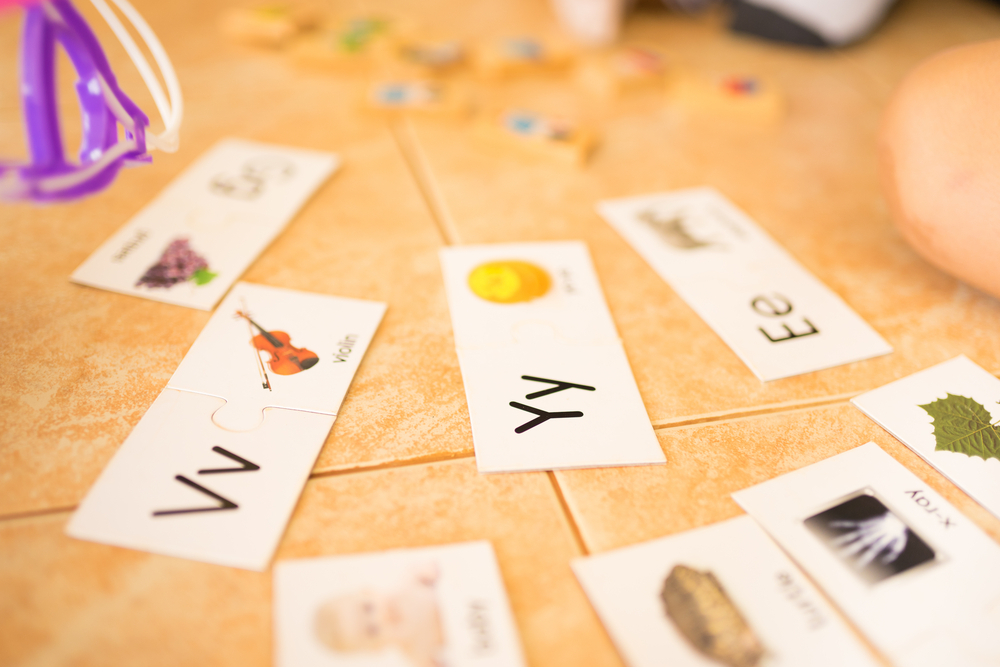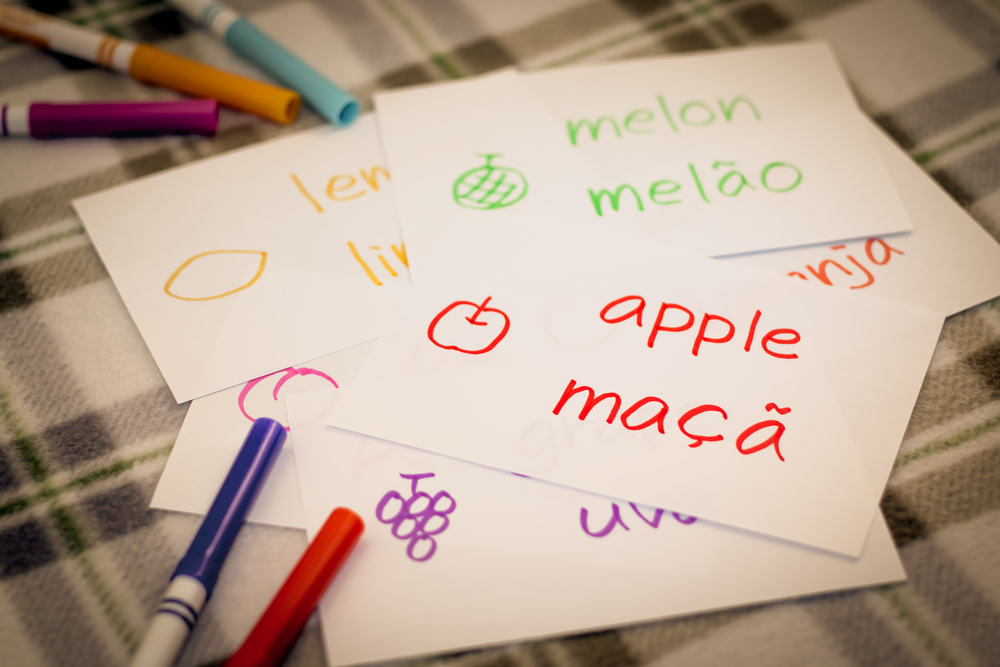
Children who are fluent in English and another language (perhaps their native language) can learn to read fluently in both languages. If children are struggling with reading in dual languages, parents can help them practice reading strategies at home.
Here are five reading tips for bilingual children that can help them read fluently and proficiently in both languages:
- Read books in both languages
- Practice the alphabet and each letter’s sound in each language
- Teach proper sentence structure
- Listen to books
- Ask questions while reading
Read Books in Both Languages
Some books are published in multiple languages. This can help children learn to read and explore the story in both languages.
However, the book doesn’t have to be the same in both languages. Parents can simply let children explore books in both languages in which they are fluent.
Let children pick their own books, but parents should make sure the book is the appropriate reading level. Allowing children to choose their books gives them the power to explore genres, writers and stories that interest them. Children also get to be in control of their reading journey, and this power of choice could make reading more fun.

Practice the Alphabet in Both Languages
Before children learn to read, they need to understand and have mastery over the code that helps them decipher each word. The alphabet can be different for every language, but these individual letters make up every word and are fundamental to the reading process.
Children should practice (and master) the alphabet for each language. However, memorizing the alphabet isn’t enough. Children also need to know the sound of each letter and how these sounds might change in different words.
Some languages include a letter that is unique to the language. For example, the Spanish alphabet includes the ñ; this sounds different from the English ‘n.’ The ñ makes the nya sound. In addition, the double ‘r’ in Spanish requires the speaker or reader to roll the ‘r’ sound.
Help Children Learn Sentence Structure
Sounds can be different in each language, and the sentence structure can be different, too. For example, the adjective is placed after the noun in Spanish. However, when writing a sentence in English, the adjective is placed before the noun.
Some languages also gender all nouns. Children have to learn which nouns are feminine and which are masculine, as the article must also reflect the gendered structure. In English, there is one common article: “the.” However, Spanish has many different articles: la, el, las, los and lo.
As children read, they will pick up these different structures. However, parents also might need to help guide them and review the different sentence structure of each language.
Listen to Books and Stories
Listening to stories read aloud also could help children. When listening to an audiobook, children also can follow along in their own book. Listening to and seeing the story could help aid comprehension, help improve vocabulary and perhaps aid them in pronunciation, too.
Public libraries typically offer audiobooks that members can check out. However, audiobooks in another language might not be readily available; parents can ask their library if these audiobooks could be ordered. In addition, parents can explore audiobook titles via Apple or other services.
Ask Questions While Reading
When reading aloud to children, ask questions about the story. Asking about characters, the plot and other details can help parents better understand their child’s comprehension of the book or story.
For younger children, focus on the basic w/h questions related to comprehension: who, what, where, when, why and how. When reading to older children, parents might ask more detailed questions about the story, the feelings or motives of characters or ask children to make predictions about what might happen next.

Other Ways to Help Children with Reading
There are many other basic ways to help children with reading, too. Reading practice can be a fun activity anywhere, even when parents are running errands with children. Here are a few more ideas for reading practice:
Go On Sight Word Scavenger Hunts
Practice sight words in both languages. Make a list of these words and have children try to find each word in a store, on a trip, etc.
Play Alphabet Games
Play games to practice the alphabet. For any language, parents can make two cards of each alphabet letter. Place the cards face down and play a match game. Encourage children to say the letter and its sound when they flip each card.
Watch a Book Movie
Some books were adapted into a movie. Some movies might be available in another language. After reading a book, watch the movie. Encourage children to spot the differences. Ask them about the book compared to the movie.
Read Poetry
Find poetry in both languages. Poetry can have a unique cadence that can make reading more fun. In addition, poems also are shorter. Children who struggle with reading might feel less overwhelmed reading poems.
Listen to Music and Read the Lyrics
A unique way to practice reading is to listen to songs and have children read the lyrics. Just make sure the song is appropriate for the child. Parents can find songs in any language; YouTube also includes lyric videos and children can read the lyrics on-screen while listening to the song.
Chunk Text While Reading
If a child feels overwhelmed with books that have more text than illustrations, parents can show them how to cover part of the page and chunk the text. This can help children only focus on a particular paragraph or maybe even just a few sentences. Chunking also might help children with comprehension; parents can ask children about each chunked section to gauge understanding.
Use a Reading Program to Guide English Reading Lessons
If children need additional help reading in English, parents also could use a reading app at home. Readability is designed for children to use throughout elementary school, and it’s leveled for each child’s reading abilities.
The program includes a built-in AI tutor that helps guide lessons. The tutor is programmed with voice-recognition software, and when a child reads aloud, the tutor can understand if they need help.
Parents can set their child’s reading level as their baseline starting point, or the program can work with the child to determine the ideal baseline reading level. Children only advance to the next reading level when they demonstrate mastery in reading fluency and comprehension.
To gauge comprehension, the tutor asks the child questions at the end of each book related to the story. If the child chooses an incorrect answer, the tutor shows them a section of the book/story and reads it aloud. The child is then given another opportunity to answer the question.
Parents can follow their child’s reading progress via a private portal. This parents-only area provides a comprehensive overview of the child’s reading progress; parents can view the child’s reading level, comprehension, reading fluency and how long they used the program. Parents also can collate this information into a reading report that can be sent to the child’s teacher to simplify communication between home and school.
Parents who are interested in using Readability at home with their child can sign up for a free seven-day trial period. This free trial provides access to all the program’s features. Sign up today to help children grow their confidence and their reading fluency.

 Español
Español